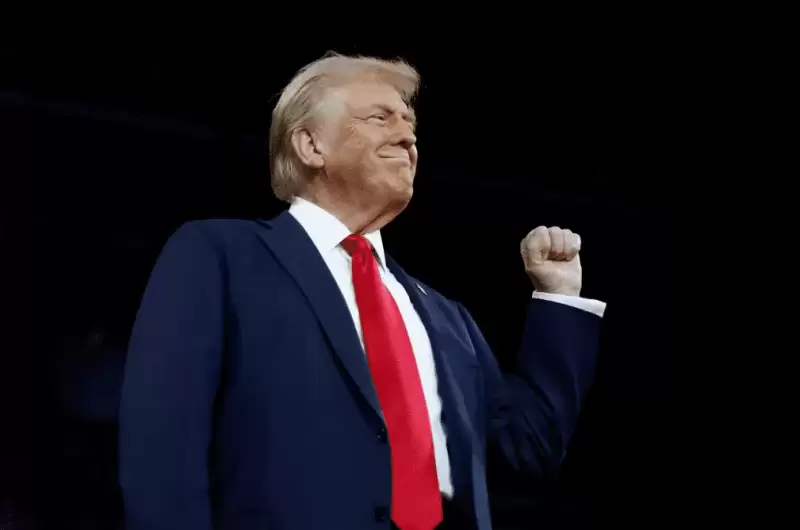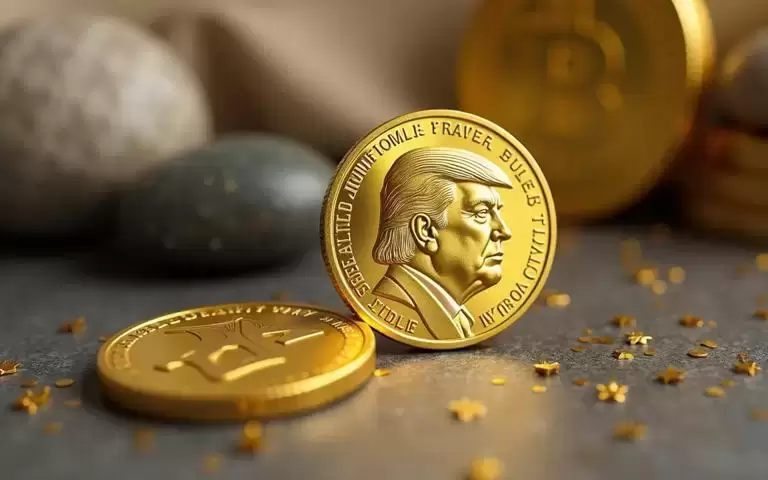 |
|
 |
|
 |
|
 |
|
 |
|
 |
|
 |
|
 |
|
 |
|
 |
|
 |
|
 |
|
 |
|
 |
|
 |
|
Cryptocurrency News Articles
The Trump administration’s trade war with the world has roiled the stock market and threatens to plunge the country into a recession
Apr 21, 2025 at 06:00 pm
The Trump administration’s trade war with the world has roiled the stock market and threatens to plunge the country into a recession

The Trump administration’s trade war with the world has roiled the stock market and threatens to plunge the country into a recession while jacking up the price of basic supplies.
But instead of taking on the financial issues dominating the headlines, the House and Senate are racing to bring stablecoins — a cryptocurrency sector few Americans have even heard of — out from the shadows.
The $230 billion stablecoin industry could be the first to benefit from Donald Trump’s promise to make the U.S. the world’s “crypto capital of the planet.”
“Passing legislation gives them a first-mover advantage to profits that are to be gained.”
Industry advocates say the legislation will clear up uncertainty around the regulation of their cryptocurrencies, unleashing a new era of financial innovation. Critics of the bipartisan push warn that the legislation risks another financial crash while enriching Trump, whose family is launching a stablecoin of their own.
“Passing legislation gives them a first-mover advantage to profits that are to be gained. We saw that with the Trump meme coin, where a lot of people lost out but it didn’t matter because Trump’s platform was making fees,” said Mark Hays, of the group Americans for Financial Reform. “It just seems like a witches’ brew of problematic things that could lead to another crash.”
What Is a Stablecoin?
To their proponents, stablecoins offer all the benefits of crypto without the downsides.
They are pegged to real-world currencies, such as the U.S. dollar. The idea is that one dollar-denominated stablecoin can always be redeemed for one dollar. Stablecoin issuers use real-world assets, such as U.S. Treasury bonds, to back their offerings.
Stablecoins live on blockchains — cryptographically protected digital ledgers — just like more famous tokens like bitcoin or Ether. Unlike bitcoins, they are supposed to be insulated from wild price swings by their currency pegs.
That hasn’t stopped some stablecoins from collapsing.
What’s the Point?
Boosters say that stablecoins can make payments faster, cheaper, and more efficient. They argue that stablecoins will make it easier to send money across international borders and create opportunities for the unbanked by cutting out traditional financial institutions.
So far, however, they’re mostly used to buy other cryptocurrencies. Crypto traders use them to cash in and cash out of more speculative tokens without paying repeated fees. Former Securities and Exchange Commission Chair Gary Gensler has likened them to “poker chips at the casino.”
Critics say that even though the biggest stablecoin was launched in 2014, the high-minded talk of improving the payment system has yet to produce results, and the only major users so far have been crypto traders, criminals seeking to evade money laundering laws, and people in the developing world whose own currencies face runaway inflation.
“They have been around for a decade. There is no doubt people have been trying to turn them into a general-purpose payment instrument,” said Arthur Wilmarth, a professor emeritus at the George Washington University law school. “And really it hasn’t worked out.”
Are They Really … Stable?
That’s what their promoters would have you believe. In reality, stablecoins have “depegged” from the dollar dozens of times.
As Sam Bankman-Fried’s fraudulent FTX exchange collapsed in late 2022, leading stablecoin issuer Tether saw its titular offering drop from the dollar by more than 2 cents. The second-biggest stablecoin, Circle’s USD Coin, dropped more than 13 cents amid revelations that many of its cash assets were jeopardized by the collapse of Silicon Valley Bank in 2023.
Then there was the notorious TerraUSD coin, an “algorithmic” stablecoin that was not backed by real-world assets. Its collapse took the token’s supposed value of $40 billion down to zero.
Most Read
Despite the promise of more concrete assets backing today’s leading stablecoins, even crypto boosters have questions about Tether. The El Salvador-based stablecoin keeps only 82 percent of its reserves in cash or cash-like instruments, dividing up the rest in more volatile investments such as bitcoin. Moreover, it has never subjected its reserve to a full financial audit.
Tether is closely aligned with Commerce Secretary Howard Lutnick, whose former firm Cantor Fitzgerald holds much of the Tether’s U.S. Treasury bonds.
The very promise of stability can lead to runs on stablecoins, experts say.
“If people think that even a few pennies of their dollar are at risk, they are going to run,” Wilmarth said. “They are not thinking, ‘I’ve put this money in the S&P 500, and I’ll ride it up and down.’”
So Congress Is Doing What Exactly?
Trump has said he wants to sign a stablecoin bill by
Disclaimer:info@kdj.com
The information provided is not trading advice. kdj.com does not assume any responsibility for any investments made based on the information provided in this article. Cryptocurrencies are highly volatile and it is highly recommended that you invest with caution after thorough research!
If you believe that the content used on this website infringes your copyright, please contact us immediately (info@kdj.com) and we will delete it promptly.
-

-

-

- Donald Trump's offer of an exclusive dinner for top holders of the TRUMP token sent shockwaves across the crypto community.
- Apr 24, 2025 at 12:40 pm
- The event, slated to take place at his Washington golf club, triggered a surge in demand for the $TRUMP coin. This move by a high-profile politician has turned heads, mixing politics and crypto in a way few imagined.
-

-

-

-

- Reliance Industries Unveils India's Homegrown Digital Currency, Jio Coin, to Introduce Web3 Technology
- Apr 24, 2025 at 12:30 pm
- output:input: Jio Platforms, Reliance’s tech subsidiary, has partnered with Polygon Labs to introduce Web3 technology to India. Reliance Industries, led by billionaire Mukesh Ambani
-

-





























































